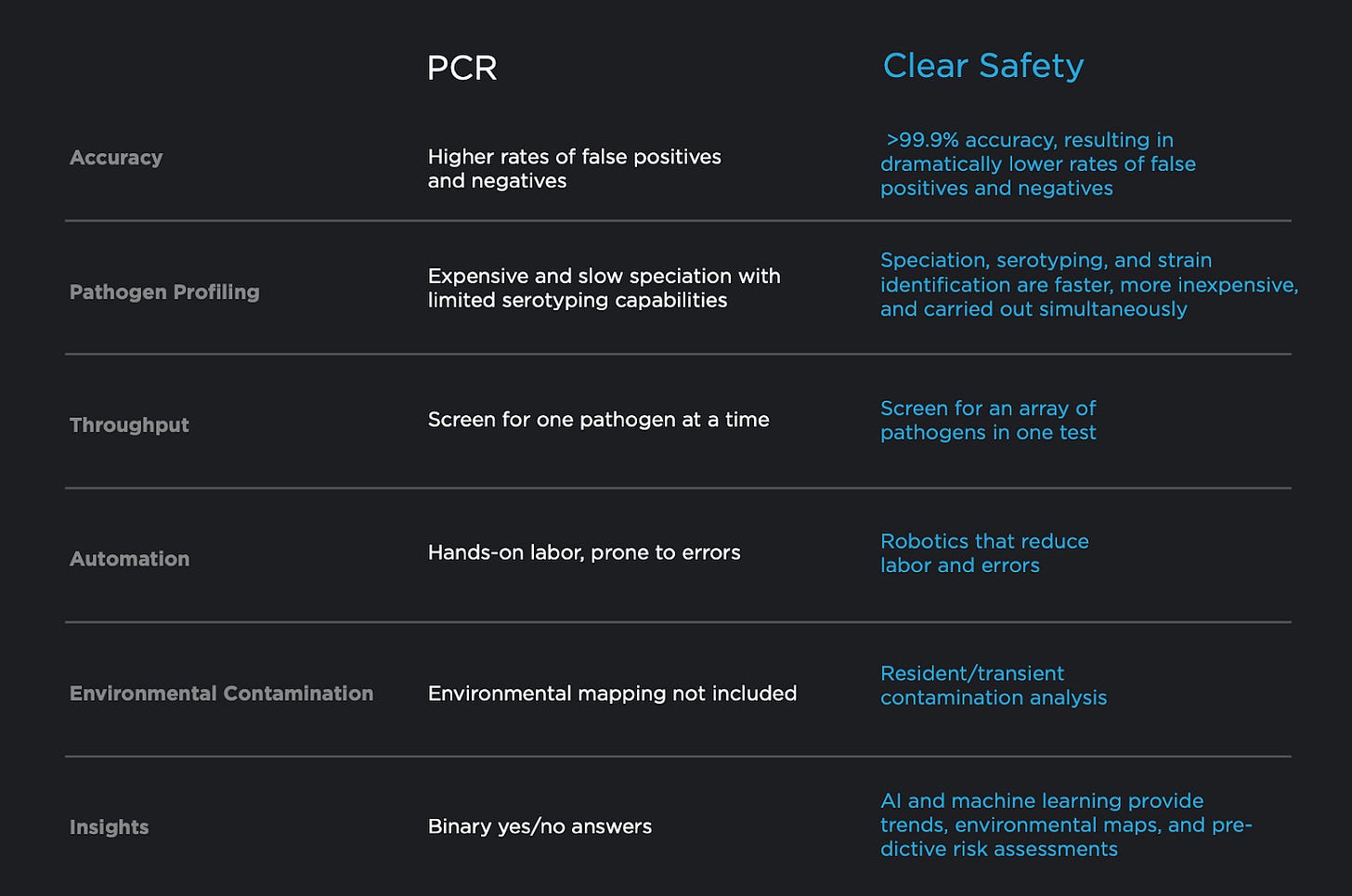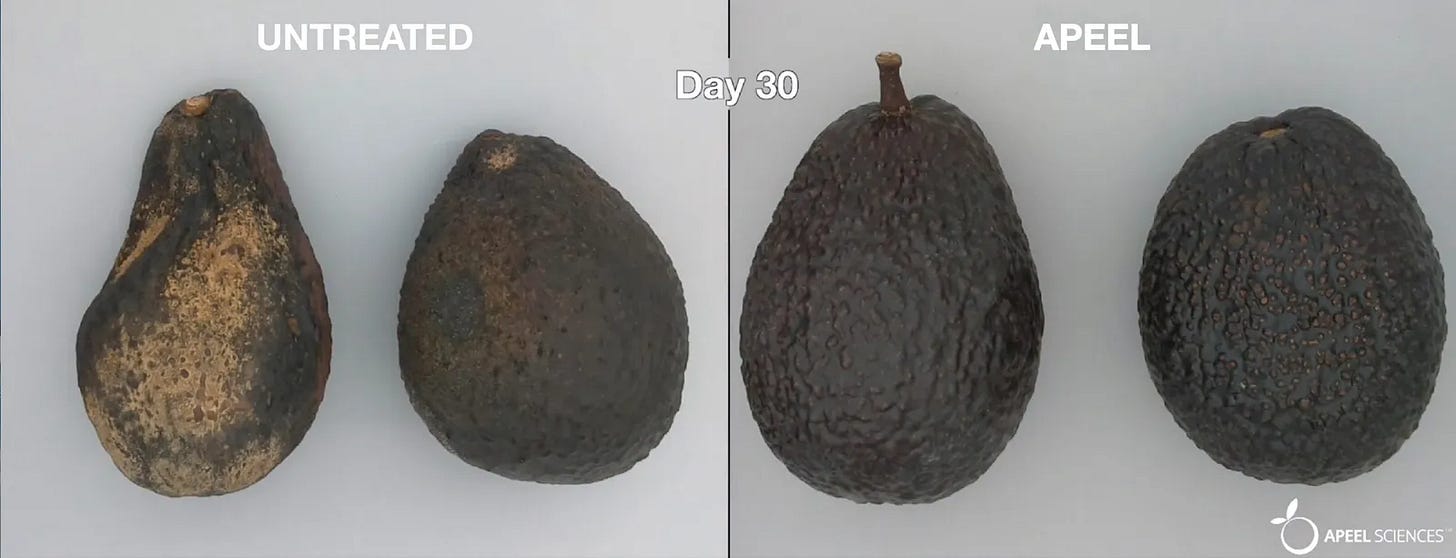Subscribe to Drawing Capital’s new podcast, The Recap.
We explore the week’s most important events in investing and tech in 15 minutes or less.
Available at: Apple Podcasts, Spotify, and YouTube.
When you think about innovation, what comes to mind? Maybe an open-floor-plan office in Palo Alto full of people silently coding, or Elon Musk watching another one of the SpaceX rockets climb ever higher into the stratosphere?
How about agriculture?
As a taste, some of the major problems that we collectively face are:
Every year, we lose about $2.6 trillion globally to food waste. This equates to roughly 25% of the fruits and vegetables produced. (2)
In the US alone, about 40% of fruits and vegetables end up in landfills (1).
The United Nations estimates that we will need to produce 70% more food by 2050 in order to feed a population of 9.6 billion people worldwide (3).
On top of growing demand, it is estimated that we only have about 60 years of fertile topsoil left (1).
Today, we take a look into three companies revolutionizing the AgTech space in order to solve the litany of problems we have in the agricultural industry. Notably, transformative innovation moves beyond incremental gains and advances humanity forward via multiplicative advances in productivity and output from fewer inputs, and AgTech is ripe for new innovation.
AppHarvest (ticker: APPH)
Based in Morehead, Kentucky
CEO: Jonathan Webb
Market Cap: $2.26 billion
AppHarvest is an AgTech company that specializes in the fields of agriculture, farming, and technology. The company is currently combining conventional agriculture techniques with today’s technology to grow non-GMO, chemical-free produce. AppHarvest specializes in Controlled Environment Agriculture (“CEA”). The goal of CEA is to provide protection as well as optimal growing conditions for each individual fruit or vegetable. The CEA process takes place within an enclosed growing structure such as a greenhouse or building.
AppHarvest boasts a technological infrastructure that can grow a fruit or vegetable with 90% less water - convenient, given that 95% of fruits and vegetables are made up of water.
Additionally, Webb noted that the company has achieved 30x more yield per acre than traditional farming, as a conservative figure. Given the progression and advancement of their technology, the average yield should increase meaningfully over time. These produce yields are much greater due to the following factors:
An optimal amount of lighting is controlled through the use of LED lights, and only to the degree that the sun is unable to provide enough light. This also helps to curb electricity consumption and grants better profit margins than companies who strictly focus on LED lighting.
AppHarvest systems require a smaller amount of water, as water is fed directly and accurately to the root. Less water leads to more sustainable output with less business disruption when water resources become scarce or temporarily unavailable. Their facility also runs entirely on recycled rainwater (retention pond is 75 Olympic-sized swimming pools) and provides UV light treatment.
Rainwater also has no sodium, unlike groundwater and well water. Once the water goes into the facility, it only leaves as a fruit or a vegetable. Facilities that use water with sodium result in major agricultural runoff, wasting millions of gallons of water and contributing further to the extensive agricultural pollution problem.
Since the exact amount of nutrients that plants need is known, resources can be efficiently managed and better utilized, thereby minimizing guesswork, waste, and inefficiency.
The controlled temperature and humidity help increase the efficiency and predictability of crop output.
Harsh pesticides are completely removed from the process.
Right now, AppHarvest focuses entirely on the production of tomatoes. While they currently and primarily sell to grocery stores, AppHarvest is starting to move into the fast-food chain market as well. The primary reason for growing tomatoes is that they are the number one produce import from Mexico, at about 4 billion pounds last year. This figure has increased substantially from the 1.2 billion pounds imported four years ago (1).
Provided that there is a clear and increasing demand for food production, AppHarvest is poised well to deliver strong results to meet domestic demand. If increasing scale brings greater unit economics for the business, they are in a strong position to upend traditional farming operations and have a desirable means of sustainability to bring food production through the trying decades to come.
Clear Labs (private company)
Based in San Carlos, CA
CEO: Sasan Amini
Capital Raised: $63.5 million
Major Investors Include: Alphabet’s GV, Menlo Ventures, Khosla Ventures, and Redmile Group.
Clear Labs harnesses the power of next-generation sequencing (NGS) to simplify complex diagnostics for clinical and applied markets. By creating the only fully-automated platform that brings together DNA sequencing, robotics, and cloud-based analytics, Clear Labs democratizes genomics applications to deliver increased clarity. Clear Labs’ turnkey platform accelerates outcomes and improves accuracy - from food-borne pathogens to infectious diseases, including SARS CoV-2. With a novel approach, Clear Labs is helping the world better understand, track and mitigate tomorrow’s novel pathogens. (6)
Clear Labs consists of two arms: Clear Safety and Clear Transparency
Clear Safety: A platform that allows food-based facilities to administer PCR, culturing, and antigen-based tests with diagnostic automation, and “mapping” of physical space.
The main applications for this product are Listeria and Salmonella contamination
Allows the user to drill down on serotypes, strains, and whole-genome sequences (“WGS”) based on the application need.
Serotyping can be performed at a fraction of the cost and with a faster turnaround.
Listeria turnaround time is 36 hours and Salmonella is 24 hours. Legacy testing services typically take several days to produce results.
Environmental mapping allows the user to visualize contamination sites, based on floor plans and even observe the travel of pathogens through the facility over time.
Additional details of Clear Safety competitive analysis are as follows:
Clear Transparency: A suite of four different tests that allow users to better understand what is in the food that they’re purchasing.
Authenticity
End-to-end services from extraction to sequencing to interpretation
Identify millions of species of animals, plants, bacteria, and fungi with a single test
Verify food supplier integrity with smart alerts for unexpected species, allergen contamination, missing ingredients, or contaminants that lead to hygienic, toxicity, or cultural concern.
GMO
A single, comprehensive test covering all known GMOs, which is continuously updated through Clear Labs GMO database
WGS
Characterization of pathogens with Whole Genome Sequencing
Sequence results in as few as 3 to 5 hours
Isolate results in 10 days
30x the coverage of other WGS alternatives
Microbiome
Predictive risk assessment for food safety, freshness and quality, organic vs non-organic, personalized diet and nutrition for each unique microbiome
According to Emergen Research, the category of food safety testing systems is expected to grow at a rate of 22.4% through 2028. As consumers expect greater transparency and quality out of their food products, Clear Labs has positioned itself well within a rapidly growing market. They provide more accurate, faster, and cheaper opportunities for produce-based retailers to meet the demands of their customers.
Apeel Sciences (private company)
Based in Goleta, CA
CEO, James Rogers
Capital Raised: $390.1 million
Major Investors Include: Andreessen Horowitz, GIC Group, Bill & Melinda Gates Foundation, Viking Global Ventures, Upfront Ventures, TAO Capital Partners, Oprah Winfrey, and Katy Perry
Apeel Sciences develops plant-derived shelf life extension technology for fresh produce that improves quality and reduces food waste to combat the $2.6 trillion lost on annual food waste. Currently, their flagship product, Apeel, doubles the shelf life of fruits and vegetables via a natural spray-on protective layer.
So, how does the Apeel protective layer work?
Apeel utilizes materials that exist in peels, seeds, and pulp of fruits and vegetables to create an extra “protective” peel that seals in moisture and keeps oxygen out.
The rapid food decay problem that the company is tackling consists of combating a 3-step process:
Food begins to dehydrate
Oxygen starts to seep into the fruit or vegetable
With the food weakened, mold starts to take hold
It may also come as a surprise that Apeel isn’t actually reinventing the wheel. They’ve derived their product from what already exists in nature - something called “cutin” - a waxy coating made of fatty acids that protect fruits and vegetables against the elements by retaining moisture.
The results, based on one of the most tested applications - avocados - have been phenomenal.
The lifespan of an avocado extended by almost a week
Ripeness window doubles from two to four days
Reduction of water loss by 30%
Reduction of softening rate by 60%
As a major grocery chain partner, Kroger has already cited a major economic improvement to their produce unit economics as well, as a direct result of improvement of food waste and inventory turnover.
Conclusion
With a looming food crisis, pressures to improve carbon emissions through transportation, and trillions of dollars lost due to food waste, agricultural and food technology is an area ready and willing to accept new innovation. AppHarvest, Clear Labs, and Apeel Sciences are three companies each taking a strong foothold in the agricultural industry to both alleviate these problems and improve the existing quality of food and supply chain processes.
Get in touch to learn more about Drawing Capital:
References:
“Interview with Jonathan Webb, Founder & CEO of AppHarvest.” Accessed 16 Mar. 2021.
“Apeel CEO talks fighting a global $2.6 trillion food waste issue.” Accessed 16 Mar. 2021.
“World must sustainably produce 70 per cent more food by mid-century – UN report.” https://news.un.org/en/story/2013/12/456912. Accessed 16 Mar. 2021.
“Controlled Ag Company AppHarvest's First-Ever Crop Arrives at Grocery Stores This Week.” https://thespoon.tech/controlled-ag-company-appharvests-first-ever-crop-arrives-at-grocery-stores-this-week/. Accessed 16 Mar. 2021.
“Clear Safety Product Brochure.” https://www.clearlabs.com/resources/clear-safety-brochure/. Accessed 16 Mar. 2021.
Clear Labs. https://www.crunchbase.com/organization/clear-labs. Accessed 17 Mar. 2021.
“Major companies operating in Food Safety Testing System Market include SGS S.A., Romer Labs Division Holding GmbH, Intertek Group plc, Bureau Veritas SA, Covance Inc., Eurofins Scientific SE, Merieux NutriSciences, NSF International, Microbac Laboratories, Inc., Nova Biologicals, Inc.“ https://www.globenewswire.com/news-release/2021/02/03/2168799/0/en/Food-Safety-Testing-System-Market-Size-to-Reach-USD-24-67-Billion-by-2028-Global-Analysis-Statistics-Food-Safety-Testing-System-Industry-Revenue-Demand-and-Trend-Analysis-Research-.html#:~:text=03%2C%202021%20(GLOBE%20NEWSWIRE),latest%20analysis%20by%20Emergen%20Research. Accessed 17 Mar. 2021.
Apeel Sciences. https://www.crunchbase.com/organization/apeel-sciences. Accessed 17 Mar. 2021.
“Inside the Science of Apeel, the Clever Coating That Saves Your Avocados.” https://www.wired.com/story/apeel/. Accessed 17 Mar. 2021.
This letter is not an offer to sell securities of any investment fund or a solicitation of offers to buy any such securities. An investment in any strategy, including the strategy described herein, involves a high degree of risk. Past performance of these strategies is not necessarily indicative of future results. There is the possibility of loss and all investment involves risk including the loss of principal.
Any projections, forecasts and estimates contained in this document are necessarily speculative in nature and are based upon certain assumptions. In addition, matters they describe are subject to known (and unknown) risks, uncertainties and other unpredictable factors, many of which are beyond Drawing Capital’s control. No representations or warranties are made as to the accuracy of such forward-looking statements. It can be expected that some or all of such forward-looking assumptions will not materialize or will vary significantly from actual results. Drawing Capital has no obligation to update, modify or amend this letter or to otherwise notify a reader thereof in the event that any matter stated herein, or any opinion, projection, forecast or estimate set forth herein, changes or subsequently becomes inaccurate.
This letter may not be reproduced in whole or in part without the express consent of Drawing Capital Group, LLC (“Drawing Capital”). The information in this letter was prepared by Drawing Capital and is believed by the Drawing Capital to be reliable and has been obtained from sources believed to be reliable. Drawing Capital makes no representation as to the accuracy or completeness of such information. Opinions, estimates and projections in this letter constitute the current judgment of Drawing Capital and are subject to change without notice.









